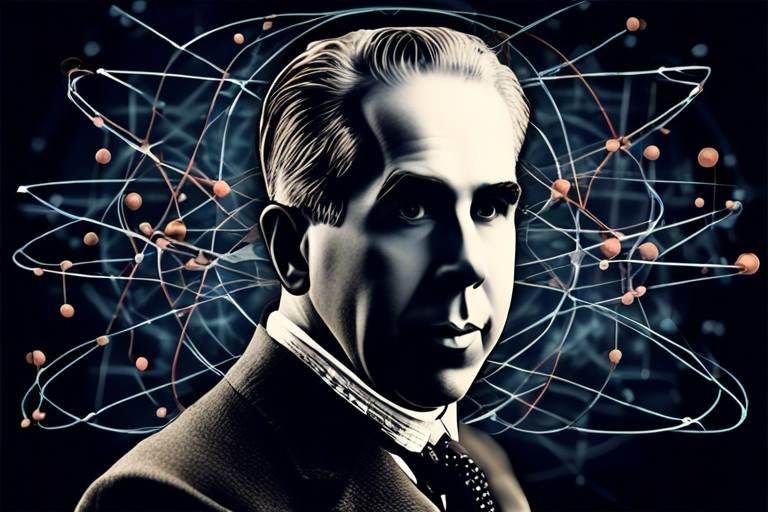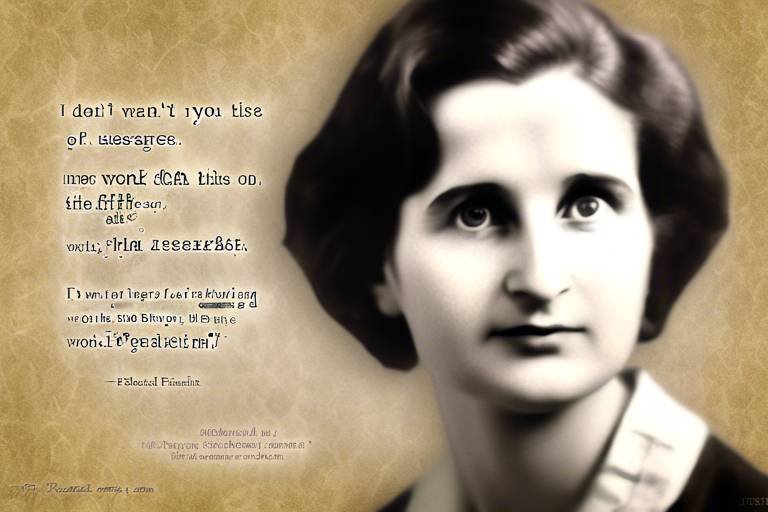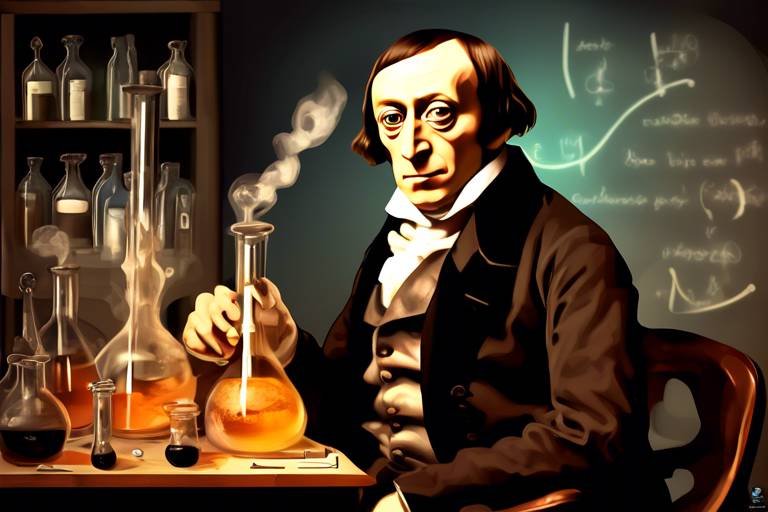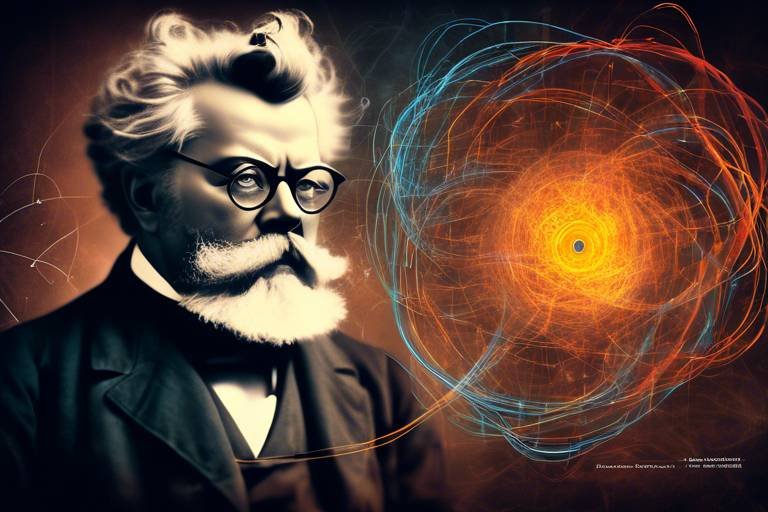The Life of Niels Bohr and Atomic Structure
Niels Bohr, a name that resonates through the halls of modern physics, was not just a scientist but a visionary whose ideas transformed our understanding of the atomic world. Born on October 7, 1885, in Copenhagen, Denmark, Bohr’s journey into the realm of physics was marked by curiosity and brilliance. He grew up in a household that cherished education, with his father being a respected physiology professor. This nurturing environment played a pivotal role in shaping his intellectual pursuits and igniting his passion for science.
Bohr's academic journey began at the University of Copenhagen, where he delved into the intricate worlds of physics and mathematics. His early exposure to the philosophical underpinnings of science, coupled with rigorous training in experimental physics, laid a strong foundation for his later groundbreaking theories. Imagine a young Bohr, surrounded by books and equations, pondering the very fabric of reality—this was the spark that would eventually lead him to revolutionize atomic theory.
In the early 20th century, the scientific community was buzzing with discoveries that were reshaping our understanding of the universe. Bohr was at the forefront of this intellectual revolution. His **model of the atom**, introduced in 1913, presented a radical departure from previous theories. By proposing that electrons orbit the nucleus in quantized shells, he not only explained the stability of atoms but also illuminated the relationship between energy levels and atomic behavior. This was a eureka moment that cemented his place in the annals of scientific history.
As we explore Bohr's life and contributions, it’s essential to understand the context in which he worked. The early 1900s were a time of profound change in physics, characterized by the development of quantum theory and relativity. Bohr's ability to synthesize these complex ideas into a coherent framework was nothing short of extraordinary. His work did not exist in isolation; it was a collaborative effort that built upon the foundations laid by other great minds of the time.
In conclusion, Niels Bohr’s life was a tapestry woven with threads of curiosity, intellect, and a relentless pursuit of knowledge. His contributions to atomic structure and quantum mechanics not only reshaped the scientific landscape but also inspired generations of physicists. As we delve deeper into his theories and their implications, we’ll uncover the layers of complexity that define modern physics.
- What is Niels Bohr best known for?
Bohr is best known for his model of the atom, which introduced the concept of quantized electron orbits and laid the groundwork for modern quantum mechanics. - How did Bohr's work influence quantum mechanics?
Bohr's contributions, particularly the Copenhagen interpretation, sparked significant debates and shaped the philosophical understanding of quantum phenomena. - What was the significance of Bohr's atomic model?
His atomic model explained how electrons occupy specific energy levels, providing insights into atomic stability and the emission of light. - Did Niels Bohr receive any awards for his work?
Yes, Bohr was awarded the Nobel Prize in Physics in 1922 for his investigations of the structure of atoms and the radiation emanating from them.

Early Life and Education
Niels Bohr was born on October 7, 1885, in the vibrant city of Copenhagen, Denmark. Growing up in a household steeped in academic rigor, Niels was the son of a distinguished physiology professor, Christian Bohr, and a talented mother, Hannah Bohr, who was a skilled amateur pianist. This stimulating environment fostered his early interest in science and the arts, setting the stage for his remarkable journey in the field of physics.
As a child, Niels was curious and inquisitive, often found exploring the world around him. His early education took place at the University of Copenhagen, where he showed a keen interest in both physics and philosophy. It was here that he began to delve into the complexities of the natural world, influenced by the works of great thinkers like Aristotle and Descartes. His academic journey was marked by a thirst for knowledge and a desire to understand the fundamental principles that govern the universe.
In 1903, Bohr enrolled in the university's physics program, where he was mentored by some of the leading scientists of the time. He was particularly inspired by the groundbreaking work of Hermann von Helmholtz and Julius Thomsen, who introduced him to the intricate world of thermodynamics and atomic theory. Bohr's relentless pursuit of knowledge culminated in his doctoral thesis, which he completed in 1911, focusing on the electron theory of metals. This work not only showcased his innovative thinking but also laid the groundwork for his future contributions to atomic structure.
During his academic years, Bohr was heavily influenced by the emerging field of quantum mechanics. He was captivated by the idea that energy is not continuous but rather exists in discrete packets, a concept that would later become pivotal in his own theories. His education was further enriched by his time spent in laboratories, where he engaged in experimental physics, allowing him to bridge the gap between theoretical concepts and practical applications.
To summarize, Niels Bohr's early life and education were characterized by a unique blend of curiosity, rigorous academic training, and a supportive family environment. These elements combined to foster his groundbreaking ideas that would eventually revolutionize our understanding of atomic structure. His journey from a young boy in Copenhagen to a pioneering physicist is a testament to the power of education and the pursuit of knowledge.

Bohr's Model of the Atom
Niels Bohr's model of the atom is often viewed as a pivotal moment in the history of physics. Imagine a miniature solar system, where electrons orbit the nucleus just like planets orbit the sun. This striking analogy is what Bohr proposed in 1913, fundamentally changing the way scientists understood atomic structure. Before Bohr, the atom was seen as a simple sphere of positive charge with electrons scattered throughout, much like a plum pudding. However, Bohr's revolutionary idea introduced the concept of quantized energy levels, suggesting that electrons can only occupy specific orbits around the nucleus.
At the core of Bohr's model is the idea that electrons exist in discrete energy levels, or shells. This means that rather than being able to exist anywhere around the nucleus, electrons can only be found in certain allowed orbits, each corresponding to a specific energy level. If an electron absorbs energy, it can jump to a higher orbit, but it must release that energy to return to its original state. This quantization of energy is what makes Bohr's model so groundbreaking and aligns with the principles of quantum mechanics.
To illustrate this concept further, consider the following table that summarizes the key features of Bohr's atomic model:
| Feature | Description |
|---|---|
| Quantized Orbits | Electrons occupy specific orbits, each with a fixed energy level. |
| Energy Absorption and Emission | Electrons can move between orbits by absorbing or emitting energy. |
| Stability of Electrons | Electrons in stable orbits do not radiate energy, preventing them from spiraling into the nucleus. |
| Angular Momentum Quantization | The angular momentum of an electron in orbit is quantized, leading to specific allowed values. |
This model not only explained the spectral lines of hydrogen but also provided a framework for understanding more complex atoms. Bohr's insights into the behavior of electrons led to a deeper understanding of chemical bonding and the periodic table. His model was a stepping stone that paved the way for the development of more advanced theories, such as quantum mechanics and wave-particle duality.
However, Bohr's model wasn't without its limitations. While it effectively described hydrogen and other simple atoms, it struggled to accurately predict the behavior of more complex systems. This limitation ultimately led to the development of quantum mechanics, which provided a more comprehensive understanding of atomic and subatomic behavior. Nevertheless, Bohr's contributions remain a cornerstone of modern physics, illustrating the delicate dance between energy, matter, and the fundamental laws of nature.
- What is Bohr's model of the atom? Bohr's model describes the atom as having quantized orbits for electrons, where they can only exist in specific energy levels.
- How did Bohr's model improve upon previous atomic theories? It introduced the idea of quantized energy levels, explaining atomic stability and the emission of light.
- What limitations does Bohr's model have? While effective for hydrogen, it fails to accurately describe more complex atoms and their behaviors.

Quantum Theory Foundations
The journey into the realm of quantum theory is akin to diving into an ocean of mystery and complexity, where the rules of classical physics simply do not apply. To truly grasp the **revolutionary contributions** of Niels Bohr, it is essential to understand the foundational concepts of quantum theory that were emerging in his time. At the heart of this transformation was the realization that energy is not continuous but rather exists in discrete packets known as quanta. This concept was a game-changer, challenging the very fabric of established scientific thought.
One of the pivotal moments in the development of quantum theory came with **Max Planck's** introduction of quantization in 1900. Planck proposed that energy could only be emitted or absorbed in fixed amounts, or quanta, which laid the groundwork for future quantum theories. Imagine trying to fill a glass with water, but instead of a steady stream, you can only pour it in measured spoonfuls—this is the essence of quantization. Planck's work opened up a new way of thinking about atomic and subatomic processes, which would later influence Bohr's atomic model.
Another cornerstone of quantum theory was the idea of wave-particle duality, which suggested that particles, such as electrons, exhibit both wave-like and particle-like properties. This dual nature can be quite perplexing. Picture a coin spinning in the air; for a brief moment, it is both heads and tails until it lands. Similarly, in the quantum world, particles can exist in multiple states until observed. This principle was crucial for Bohr's development of his atomic model, as it allowed for a more nuanced understanding of electron behavior within an atom.
Moreover, the uncertainty principle introduced by **Werner Heisenberg** further complicated matters, positing that one cannot simultaneously know both the position and momentum of a particle with absolute certainty. This principle shattered the classical notion of predictability in physics and introduced a new layer of randomness and probability into the scientific discourse. To illustrate this, consider trying to pinpoint the exact location of a buzzing bee in a garden. The more accurately you try to measure its position, the less certain you become about its speed and direction. This uncertainty is a fundamental aspect of the quantum realm.
In this context, Bohr's model of the atom can be viewed as a bridge between classical and quantum physics. He proposed that electrons orbit the nucleus in specific, quantized energy levels, much like planets orbiting the sun but with unique rules governing their behavior. This model not only explained the stability of atoms but also accounted for the emission and absorption spectra observed in various elements. The implications of Bohr's work were profound, as they laid the groundwork for modern quantum mechanics, influencing not only physics but also chemistry and technology.
As we delve deeper into Bohr's contributions, it becomes clear that his understanding of quantum theory was not merely academic but a reflection of the shifting paradigms of science during his lifetime. His ability to synthesize complex ideas into a coherent model of atomic structure was a testament to his brilliance and creativity. The evolution of quantum theory, from Planck's initial hypotheses to Bohr's atomic model, represents a monumental leap in our understanding of the universe, one that continues to inspire and challenge scientists today.
- What is quantum theory? Quantum theory is a fundamental theory in physics that describes the physical properties of nature at the scale of atoms and subatomic particles.
- How did Niels Bohr contribute to quantum theory? Niels Bohr developed the Bohr model of the atom, which introduced quantized electron orbits, fundamentally changing our understanding of atomic structure.
- What is wave-particle duality? Wave-particle duality is the concept that every particle or quantum entity can be described as either a particle or a wave, depending on the experiment being conducted.
- What is the uncertainty principle? The uncertainty principle, formulated by Werner Heisenberg, states that the position and momentum of a particle cannot both be precisely determined at the same time.

Planck's Quantum Hypothesis
Max Planck's groundbreaking work in the early 20th century fundamentally altered our understanding of energy and matter. His quantum hypothesis proposed that energy is not emitted or absorbed continuously, but rather in discrete packets called quanta. This revolutionary idea challenged the classical physics paradigm, which viewed energy as a smooth, continuous flow. Imagine trying to pour a glass of water; if the water flowed in a steady stream, that would be akin to classical physics. However, Planck's hypothesis suggests that the water flows in distinct drops, each representing a quantum of energy.
Planck introduced the concept of the quantum of action, represented by the symbol \( h \), which is now known as Planck's constant. This constant is crucial in calculating the energy of a photon, which is given by the equation \( E hf \), where \( E \) is energy, \( h \) is Planck's constant, and \( f \) is the frequency of the electromagnetic wave. This equation highlights how energy levels are quantized, leading to the idea that electrons in an atom can only occupy specific energy levels.
To better understand Planck's influence on Bohr's work, consider the following table that summarizes the key aspects of Planck's quantum hypothesis:
| Concept | Description |
|---|---|
| Quanta | Energy is emitted or absorbed in discrete packets. |
| Planck's Constant (h) | A fundamental constant that relates energy and frequency. |
| Quantization | Electrons occupy specific energy levels within an atom. |
Planck's hypothesis laid the groundwork for the development of quantum mechanics and directly influenced Niels Bohr's atomic model. By understanding that energy levels are quantized, Bohr was able to propose a model where electrons orbit the nucleus at fixed distances, each corresponding to a specific energy level. This was a significant departure from classical models that could not explain the stability of atoms or the emission spectra of elements.
Moreover, Planck's ideas opened the door for further exploration into the nature of light and matter. The implications of his hypothesis were profound, leading to a series of developments in physics that would eventually culminate in the formulation of quantum mechanics. The transition from classical to quantum physics is akin to moving from black-and-white television to high-definition color; the clarity and depth of understanding expanded dramatically.
In summary, Max Planck's quantum hypothesis was a pivotal moment in the history of science. It not only challenged existing theories but also paved the way for future scientists like Niels Bohr to explore the atomic structure in ways that were previously unimaginable. The seeds of quantum theory sown by Planck continue to bear fruit in modern physics, influencing everything from chemistry to technology.
- What is Planck's quantum hypothesis? It is the idea that energy is emitted or absorbed in discrete packets called quanta.
- How did Planck's work influence Niels Bohr? Planck's quantization of energy levels helped Bohr develop his atomic model, where electrons occupy specific orbits around the nucleus.
- What is Planck's constant? Planck's constant (h) is a fundamental constant used to calculate the energy of photons based on their frequency.
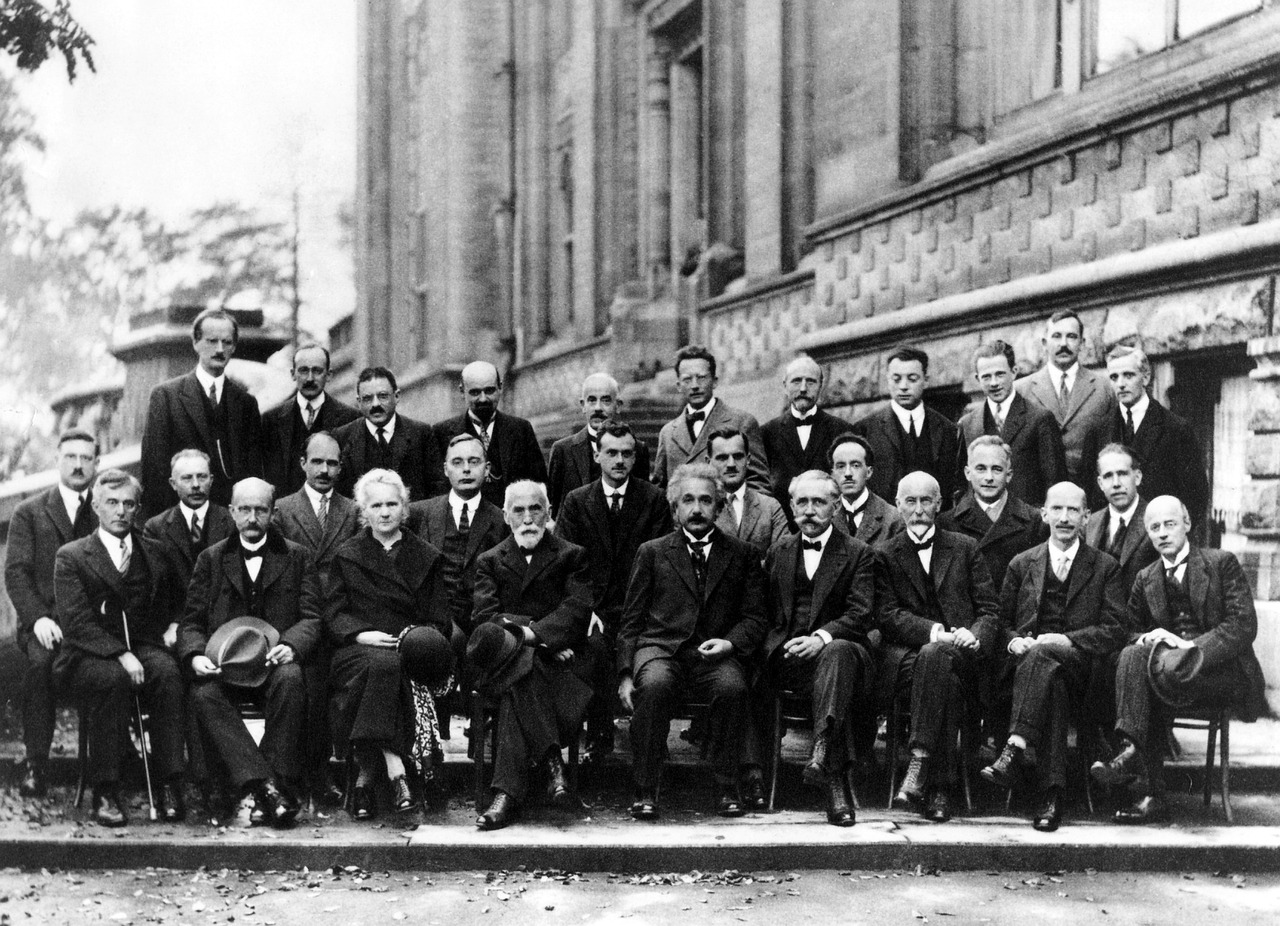
Einstein's Relativity and Its Impact
Albert Einstein's theories, particularly his theory of relativity, had a profound impact on the scientific landscape of the early 20th century, radically changing our understanding of time, space, and energy. When we think about Einstein, we often picture the eccentric genius with wild hair, but his contributions go far beyond that iconic image. His work challenged the very foundations of classical physics, which had dominated the field for centuries. This was a time when scientists were beginning to peel back the layers of the universe, and Einstein's insights were like a key that unlocked new doors.
Einstein's relativity introduced the idea that time and space are not absolute but are intertwined in a way that can be affected by speed and gravity. This concept was revolutionary, as it contradicted the long-held Newtonian views that had been accepted for years. For Niels Bohr, this intersection of relativity and quantum mechanics was particularly intriguing. It pushed him to think beyond the classical limits, leading him to develop models that incorporated these new ideas. The implications of relativity on atomic structure were significant, as they suggested that the behavior of particles could change based on their relative motion.
To better understand the impact of Einstein's relativity on Bohr's work, consider the following key aspects:
- Time Dilation: The concept that time can vary for observers in different states of motion. This idea influenced Bohr's understanding of atomic clocks and the precision required in quantum mechanics.
- Mass-Energy Equivalence: The famous equation Emc2 shows that mass can be converted into energy and vice versa. This principle was crucial for Bohr's work on nuclear reactions.
- Simultaneity: Einstein proposed that events that are simultaneous in one frame of reference might not be simultaneous in another. This challenged Bohr to reconsider the nature of atomic interactions.
Einstein's theories did not just influence Bohr; they ignited a broader scientific revolution. The dialogue between these two titans of science fostered a rich environment where ideas could flourish. Their debates on the nature of reality and the interpretation of quantum mechanics led to a deeper understanding of the universe. Bohr often found himself at odds with Einstein, especially regarding the philosophical implications of quantum mechanics. While Einstein famously said, "God does not play dice with the universe," Bohr argued that uncertainty was a fundamental aspect of nature.
The interplay between relativity and quantum theory is a perfect example of how scientific thought evolves. Einstein's relativity provided a framework that allowed Bohr to explore the quantum realm more fully. This collaboration of ideas laid the groundwork for what we now refer to as modern physics. The legacy of their discussions continues to resonate in contemporary scientific debates, as physicists strive to unify quantum mechanics with relativity in a theory of everything.
In summary, Einstein's relativity was not merely an abstract concept; it was a catalyst that propelled Niels Bohr and his contemporaries into new realms of thought. The impact of these ideas is still felt today, as scientists grapple with the mysteries of the universe. As we continue to explore the depths of atomic structure and the fabric of reality, we owe a debt of gratitude to both Einstein and Bohr for their groundbreaking contributions.
- What is the theory of relativity? The theory of relativity is a scientific theory proposed by Albert Einstein that describes the relationship between space, time, and gravity.
- How did Einstein's work influence Niels Bohr? Einstein's theories challenged Bohr to rethink classical physics and contributed to the development of quantum mechanics.
- What are the key principles of Einstein's relativity? Key principles include time dilation, mass-energy equivalence, and the relativity of simultaneity.

Experimental Validation
When it comes to scientific theories, the real test lies in their ability to withstand the scrutiny of experimentation. Niels Bohr's atomic model was no exception. His groundbreaking ideas about quantized electron orbits were not just products of theoretical musings; they were validated through a series of pivotal experiments that reshaped our understanding of atomic structure. One of the most significant experiments that supported Bohr's model was the hydrogen spectrum observation. By analyzing the light emitted from hydrogen gas when excited, scientists observed distinct spectral lines that corresponded to specific energy levels. This was a clear indication that electrons occupy quantized orbits, as proposed by Bohr.
Another key experiment was conducted by J.J. Thomson, who used cathode rays to demonstrate the existence of electrons. This experiment provided foundational evidence for the existence of subatomic particles, which Bohr built upon. Furthermore, the Rutherford gold foil experiment revealed that atoms have a small, dense nucleus, leading to the conclusion that electrons orbit this nucleus in a manner similar to planets orbiting the sun. This analogy helped to solidify the visual representation of Bohr's model in the minds of physicists and laypeople alike.
The scientific community's reaction to Bohr's model was mixed at first. While many were fascinated by the implications of his work, others were skeptical. To address these doubts, Bohr himself engaged in numerous discussions and debates with contemporaries, including the likes of Albert Einstein. Their famous exchanges, particularly about the nature of quantum mechanics and the probabilistic interpretation of atomic behavior, became legendary in scientific circles. These debates not only highlighted the innovative nature of Bohr's theories but also encouraged further experimentation and exploration in the field of quantum physics.
In summary, the experimental validation of Bohr's atomic model was crucial in establishing its credibility. Through meticulous observations and groundbreaking experiments, Bohr's theories transitioned from speculative ideas to accepted scientific principles. The resonance of his findings continues to echo through modern physics, influencing everything from quantum mechanics to our understanding of chemical reactions.
- What is Niels Bohr known for?
Bohr is primarily known for his model of the atom, which introduced the concept of quantized electron orbits and laid the foundation for modern quantum mechanics. - How did Bohr's model differ from earlier atomic models?
Earlier models, like Thomson's "plum pudding" model, did not account for quantized energy levels. Bohr's model introduced the idea that electrons exist in specific energy states, leading to the emission of discrete spectral lines. - What experiments supported Bohr's atomic model?
The hydrogen spectrum observation and the Rutherford gold foil experiment were pivotal in validating Bohr's theories about atomic structure. - What is the Copenhagen interpretation?
The Copenhagen interpretation, developed by Bohr and others, posits that quantum particles do not have definite properties until they are measured, emphasizing the role of the observer in determining quantum states.

Contributions to Quantum Mechanics
Niels Bohr's contributions to quantum mechanics are nothing short of revolutionary. His work didn't just change the way we understand the atom; it reshaped the entire landscape of modern physics. Bohr's insights into atomic structure led to profound implications for the field of quantum mechanics, which deals with the behavior of particles at the smallest scales. One of his most significant contributions was the establishment of the Copenhagen interpretation, a framework that remains a cornerstone of quantum theory.
The Copenhagen interpretation posits that quantum particles do not have definite properties until they are observed. This idea was radical at the time and sparked intense debates among physicists. Imagine trying to catch a fish in a pond; until you look into the water, you can't know where the fish is or what it's doing. Similarly, in Bohr's view, the act of measurement collapses the wave function of a quantum particle, giving it specific properties only when observed. This concept challenged traditional notions of reality and led to philosophical discussions that still resonate today.
Bohr's influence extended beyond just theoretical frameworks. He was instrumental in the development of the concept of complementarity, which suggests that objects can be described in mutually exclusive but equally valid ways. For instance, light can behave both as a wave and as a particle, depending on how it is measured. This duality is a fundamental aspect of quantum mechanics and illustrates Bohr's profound understanding of the complexities of atomic behavior.
In addition to his theoretical contributions, Bohr played a significant role in fostering a collaborative environment among physicists. He established the Institute for Theoretical Physics in Copenhagen, which became a hub for scientific research and dialogue. Scientists from around the world gathered there to share ideas, challenge each other's theories, and ultimately advance our understanding of quantum mechanics. It was at this institute that many groundbreaking ideas were born, highlighting Bohr's commitment not only to his own work but also to the scientific community as a whole.
Furthermore, Bohr's contributions weren't limited to his own theories. He engaged in profound discussions with other leading scientists of his time, including Albert Einstein. Their debates about the nature of reality and the interpretation of quantum mechanics are legendary. While Einstein famously resisted some of Bohr's ideas, famously stating, "God does not play dice with the universe," it is precisely these discussions that pushed the boundaries of scientific thought and led to a deeper understanding of quantum mechanics.
To summarize, Niels Bohr's contributions to quantum mechanics were multifaceted, encompassing theoretical advancements, the establishment of key concepts like complementarity, and the promotion of collaborative scientific inquiry. His legacy is evident in the way we understand the quantum world today, and his ideas continue to inspire physicists and researchers across various disciplines.
- What is the Copenhagen interpretation?
The Copenhagen interpretation is a fundamental theory in quantum mechanics that posits particles do not have definite properties until they are measured. - How did Bohr influence modern physics?
Niels Bohr's theories laid the groundwork for quantum mechanics and introduced key concepts that are still used in scientific research today. - What is Bohr's model of the atom?
Bohr's model introduced the idea of quantized electron orbits around the nucleus, fundamentally changing our understanding of atomic structure. - Did Bohr collaborate with other scientists?
Yes, Bohr engaged in significant discussions and debates with prominent scientists, including Albert Einstein, which helped shape the field of quantum mechanics.

The Copenhagen Interpretation
The Copenhagen Interpretation of quantum mechanics, primarily developed by Niels Bohr and Werner Heisenberg in the early 20th century, is one of the most significant and debated theories in the realm of physics. At its core, this interpretation suggests that quantum particles do not possess definite properties until they are measured. Imagine trying to pinpoint the exact location of a cat in a room filled with fog; until you shine a light on it, the cat could be anywhere. This analogy captures the essence of the Copenhagen Interpretation — the idea that particles exist in a state of probability, only collapsing into a specific state upon observation.
Bohr proposed that to understand the behavior of quantum systems, one must accept a certain level of uncertainty and embrace the concept of wave-particle duality. In simpler terms, particles like electrons exhibit both wave-like and particle-like properties, depending on how they are observed. This duality is akin to viewing a coin; when you look at it from one angle, it appears to be heads, and from another, tails. This perspective forces physicists to rethink the very nature of reality and observation.
One of the most intriguing aspects of the Copenhagen Interpretation is its philosophical implications. It raises profound questions about the role of the observer in the universe. Are we merely passive spectators, or do we actively shape reality through our measurements? This question has sparked extensive debates among physicists and philosophers alike, leading to a myriad of interpretations and schools of thought. For instance, some argue that the act of measurement creates reality, while others contend that reality exists independently of our observations.
To further illustrate the impact of the Copenhagen Interpretation, consider the following table that highlights its key features:
| Feature | Description |
|---|---|
| Wave-Particle Duality | Particles exhibit both wave-like and particle-like properties depending on the type of measurement. |
| Probability | Quantum particles exist in a state of probability until measured, collapsing into a definite state. |
| Observer Effect | The act of observation influences the state of a quantum system, raising questions about reality. |
| Complementarity | Different experimental setups reveal different aspects of quantum systems, highlighting the need for multiple perspectives. |
In essence, the Copenhagen Interpretation not only revolutionized the understanding of atomic and subatomic particles but also opened Pandora's box regarding the philosophical questions surrounding reality and observation. It invites us to ponder: if our observations shape the universe, what does that say about our place within it? This interpretation continues to be a cornerstone of modern physics, influencing everything from quantum computing to philosophical discussions about the nature of existence.

Legacy and Influence
Niels Bohr's impact on the realm of physics is nothing short of monumental. His pioneering work laid the groundwork for modern atomic theory and quantum mechanics, influencing not just the scientific community of his time but also generations of scientists who followed. Imagine standing at the edge of a vast ocean of knowledge; Bohr was one of the first to chart the waters, guiding others to explore the depths of atomic structure and behavior. His legacy is woven into the very fabric of contemporary physics, making him a central figure in the scientific narrative.
One of the most significant aspects of Bohr's influence is his development of the Copenhagen interpretation of quantum mechanics. This interpretation introduced a philosophical framework that challenged traditional notions of reality and observation. It posited that the act of measurement affects the system being observed, a concept that still sparks debates among physicists today. Bohr’s ideas opened up a Pandora's box of questions regarding the nature of reality, prompting scientists to rethink their understanding of the universe. His ability to blend theoretical insight with philosophical inquiry has inspired countless discussions and explorations in both fields.
Moreover, Bohr's contributions extend beyond theoretical physics; they have had a far-reaching impact on various disciplines, including chemistry, engineering, and even philosophy. His model of the atom has been integral in the development of technologies such as semiconductors and lasers, which are critical in today’s digital age. The principles of quantum mechanics that he championed are foundational in understanding phenomena in fields as diverse as material science and biotechnology.
To put it simply, Niels Bohr was not just a scientist; he was a visionary who saw the potential for science to unravel the mysteries of the universe. His legacy is celebrated in various forms, from academic institutions named in his honor to awards recognizing outstanding contributions to physics. In fact, the Niels Bohr Institute in Copenhagen continues to be a leading center for research in quantum physics and related fields. Bohr's influence is also evident in popular culture, where references to his theories can be found in literature, films, and documentaries, making the complex world of quantum mechanics more accessible to the general public.
In summary, Niels Bohr’s legacy is a testament to the enduring power of curiosity and intellect. His work not only reshaped our understanding of atomic structure but also ignited a passion for inquiry that continues to inspire scientists around the world. The questions he raised and the theories he proposed are as relevant today as they were during his lifetime, ensuring that his influence will be felt for many generations to come.
- What is Niels Bohr best known for? Bohr is best known for his model of the atom and his contributions to quantum mechanics, particularly the Copenhagen interpretation.
- How did Bohr's work influence modern physics? His theories laid the foundation for understanding atomic structure and quantum behavior, influencing various scientific fields and technologies.
- What is the Copenhagen interpretation? It is a philosophical framework for quantum mechanics that asserts the act of measurement affects the system being observed.
- Are there any institutions named after Bohr? Yes, the Niels Bohr Institute in Copenhagen is a prominent research center in physics.
Frequently Asked Questions
- Who was Niels Bohr?
Niels Bohr was a Danish physicist who made foundational contributions to understanding atomic structure and quantum mechanics. He is best known for his model of the atom, which introduced the idea of quantized electron orbits, revolutionizing how we view atomic behavior.
- What is Bohr's model of the atom?
Bohr's model of the atom depicts electrons orbiting the nucleus in specific, quantized energy levels. This model was groundbreaking because it explained how atoms emit and absorb energy in discrete amounts, leading to a better understanding of atomic structure.
- How did Bohr's work relate to quantum theory?
Bohr's work was deeply rooted in quantum theory, which describes the behavior of particles at atomic and subatomic levels. His model of the atom was influenced by the principles of quantization established by Max Planck and the wave-particle duality introduced by Albert Einstein.
- What is the Copenhagen interpretation?
The Copenhagen interpretation, developed by Bohr and his contemporaries, is a philosophical framework for understanding quantum mechanics. It suggests that physical systems do not have definite properties until they are measured, leading to debates about the nature of reality and observation.
- How did Bohr's ideas influence modern physics?
Bohr's contributions laid the groundwork for much of modern physics, particularly in quantum mechanics. His theories have influenced various fields, from chemistry to information technology, and continue to inspire future generations of scientists.
- What experiments validated Bohr's atomic model?
Several key experiments, such as those involving hydrogen spectra, supported Bohr's atomic model. These experiments demonstrated that the energy levels predicted by his model matched the observed spectral lines, solidifying his theories within the scientific community.
- What was the impact of Planck's quantum hypothesis on Bohr?
Max Planck's quantum hypothesis, which introduced the concept of quantized energy levels, was crucial to Bohr's development of his atomic model. It provided the theoretical basis that allowed Bohr to explain atomic behavior in a new, revolutionary way.
- Did Einstein and Bohr agree on quantum mechanics?
No, Einstein and Bohr had significant disagreements regarding quantum mechanics. While Bohr embraced the probabilistic nature of quantum theory, Einstein famously stated, "God does not play dice," advocating for a deterministic view of the universe.

